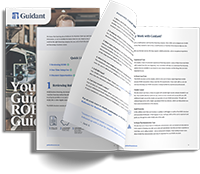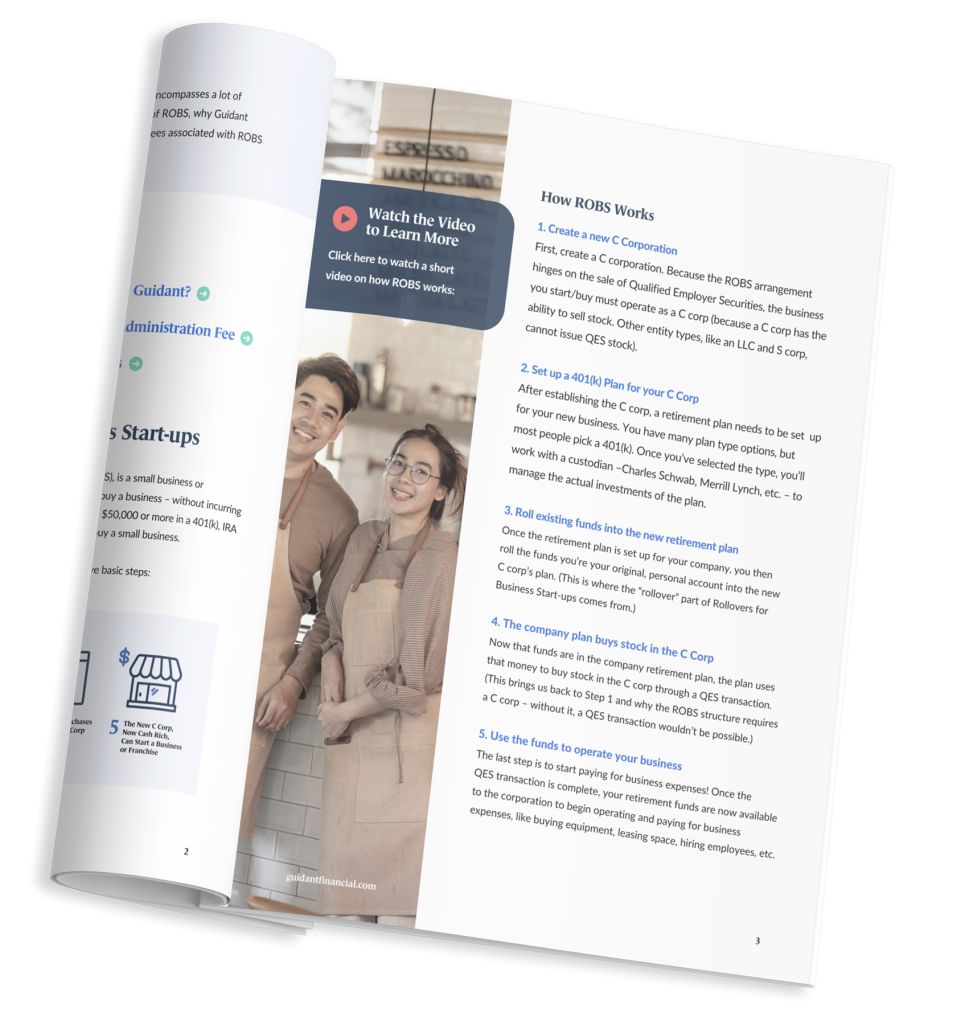Financing a small business with your retirement funds is possible with two different options: Rollovers as Business Startups and self-directed IRAs. If you’ve been saving for retirement throughout the course of your career, congratulations! Not only are you better set up for a stable financial future and worry-free golden years, but you also now have options if you’re an entrepreneur who is more interested in starting a small business or franchise than heading to the beach with a book.
When you search the Internet for ways to use your IRA or 401(k) funds to buy or start a small business or franchise, you’ll find two options: self-directed IRAs and Rollovers for Small Business Start-ups (also known as ROBS or 401(k) business financing). Both of these allow you to invest up to 100 percent of your existing retirement assets into a business or franchise – but under extremely different circumstances.
Let’s discuss each option in more detail, as well as compare and contrast the conditions that make one work better than another for your particular situation and needs.
The Rules of Rollovers as Small Business Startups
If you prefer being in control, then Rollovers as Small Business Start-ups could be the right option for you. With ROBS, you maintain control over the business or franchise you invest in. When you use this type of 401(k) business financing, you can utilize funds from your eligible retirement account to invest into a business or franchise without incurring any taxes or penalties – and you can work for the business. In fact, under ROBS regulations, you must be involved in the business as a bona fide employee. Guidant Financial recommends working at least 1,000 hours per year. There are other important regulations you have to follow if you elect to take a salary, as you’ll see below.
401(k) business funding is possible because of exemptions Congress made to encourage investments in small businesses.
Here’s how the ROBS structure works in 5 simple steps:
- Establish a new C corporation. This is critical because the only type of business that has the ability to sell stock is a C corporation. Other entity types such as an LLC, LLP, S Corp or Sole Proprietorship are prohibited from selling stock.
- That C corporation sets up a new qualified retirement plan that can invest in private stock – usually a 401(k).
- Funds from an existing, eligible retirement account (401(k), IRA, 403(b), etc.) are rolled into the new retirement plan.
- The new plan invests in stock of the C corporation.
- The corporation then acquires or starts a small business or franchise with those funds.
Learn more about your funding options: Pre-qualify Today.
Now that you’re familiar with how ROBS works, take a look at an overview of self-directed IRAs.
Balancing the Benefits of self-directed IRAs
In essence, self-directed IRAs are quite opposite from ROBS. In fact, they are more like passive investment vehicles where you can’t be involved in running the business in which you choose to invest. In fact, the Internal Revenue Code prohibited transactions clause clearly states that you can’t interact with the assets of the plan.
As you can see, self-directed IRAs and ROBS are quite different. Here we’ll compare and contrast each in terms of salary, Unrelated Business Income Tax, Business Loan guarantees and personal ownership.
Taking a Salary
ROBS – As the business owner, you can pay yourself a salary as compensation for your work – as long as it’s deemed “reasonable.”
Self-directed IRAs – Since self-directed IRA owners aren’t allowed to work for the business they invest in, this means you are also not eligible to pay yourself a salary. This would qualify as a prohibited transaction that could void the entire arrangement.
Unrelated Business Income Tax (UBIT)
ROBS – The UBIT doesn’t apply to the ROBS structure because this tax only applies to business income generated by organizations and entities that are exempt from tax. The C corporation that owns the ROBS business is not tax-exempt.
Self-directed IRAs – Self-directed IRAs are potentially subject to UBIT because they’re not related to furthering the purpose of the organization. In most cases, the way the business generates income isn’t related to the self-directed IRA pass-through investment.
Guaranteeing Business Loans
ROBS – Funds from ROBS can be used as a down payment on a loan. In fact, many small business owners use ROBS as a down payment for a Small Business Association (SBA) loan. You may want to investigate using other forms of small business financing to supplement your ROBS investment and extend your buying power while preserving your personal credit. Besides SBA loans, other options include unsecured loans and portfolio loans.
Self-directed IRAs – Self-directed IRAs cannot be used to guarantee loans of any type – personal or business-related.
Amount of Ownership
ROBS – With ROBS, you can own up to 100 percent of your own business!
Self-directed IRAs – Any personal, individual ownership of a business using a self-directed IRA can create a prohibited transaction, depending on the facts and circumstances. The personal, individual ownership of 50 percent or more of a business will trigger a prohibited transaction that voids the arrangement every time.
Financing Your Future
By now you can probably tell that self-directed IRAs are only ideal if you’re looking to invest in a business – and not be involved in running it (or taking a salary). Rollovers for Small Business Start-ups, on the other hand, are smart options if you want to start or buy a business or franchise that you can control.
Both types of funding come with ongoing responsibilities, so make sure you learn more about the options you’re qualified for before you make your decision – it only takes a few minutes and the results will help you determine which financing is your best fit.
Please note this article is for educational purposes only and is not intended to serve as financial or tax advice. You should always consult your own financial and tax advisers before making any decisions.


















